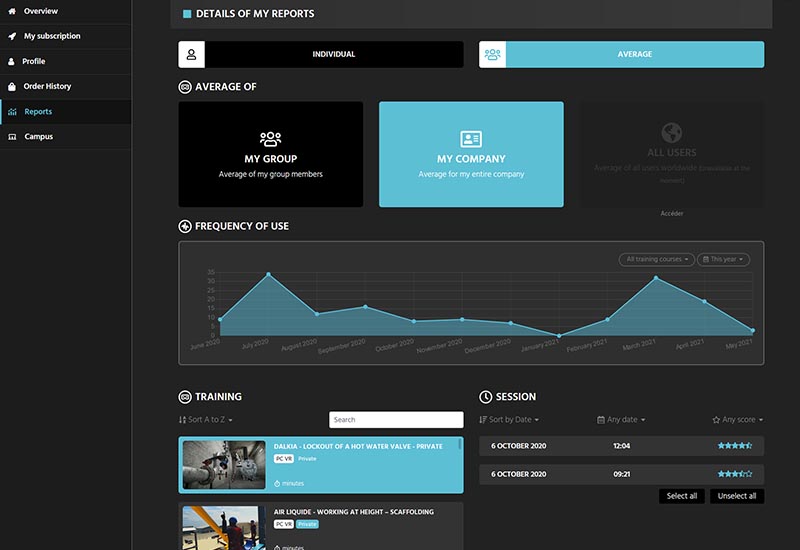In Europe, the food industry referring to a series of industrial activities directed at the production, distribution, processing, conversion, preparation, preservation, transport, certification and packaging, is one of the largest and most important manufacturing sectors.
ACCIDENTS:
- In terms of fatalities, injuries and work-related ill-health, agriculture is one of the three most hazardous sectors of activity (along with construction and mining). (source)
- Potential dangers that workers in the food manufacturing industry face are; Falls from a height; Injury from food processing and packaging machinery; Manual handling; Slips on contaminated floors and Struck by a moving vehicle or an object. (source)
MARKET:
- The global food processing equipment market size was valued at USD 55.50 billion in 2020 and is expected to expand at a compound annual growth rate (CAGR) of 6.1% from 2021 to 2028. (source)
ACCIDENTS:
- Of the nearly 3 million nonfatal workplace injuries and illnesses reported by private industry employers in 2016, 19,740 occurred in the food manufacturing industry. (source)
- In the U.S, Sprains and strains are the most common injuries among food manufacturing workers and are often caused by repetitive and awkward motions while processing food. (source)
MARKET:
- The US food manufacturing industry consists of about 27,000 establishments (single-location companies and branches of multi-location companies) with combined annual revenue of about $780 billion. (source)
ACCIDENTS:
- Repetitive manual handling, carrying loads and awkward work postures are still very common despite automation, which can contribute to the appearance of musculoskeletal disorders and lead to work accidents. (source)
- Liquid fatty waste and damp or poorly maintained floors can cause falls, which is the leading cause of accidents. (source)
MARKET:
- The food industry represents around €180 billion or 20% of the total manufacturing market in France. (source)
Each year, 2,500 U.S workers are injured and more than 700 U.S. are killed in machine-related accidents. Reasons for these accidents include that when proper precautions (e.g in regards to shutting down the equipment during maintenance ) are not taken, workers face increased risk of burns and electrocution. Another reason is because of loud noises that prevent proper communication between the employees at the workplace.
How Immersive Factory’s solution helps overcome this challenge:
Over 30 immersive workshops that can be done repeatedly to allow faster and more efficient training to accelerate skills development. Thanks to the VR aspect of the exercises, the impressions of potential dangers are so realistic that the consequences are engraved in the learner’s mind which will aid in reducing the number of work accidents.

Slip, trip, and fall hazards are among the most common causes of injury in both the food manufacturing industry. The main reason for this is because of the wet and unsafe surfaces from the high volume of liquids used in food manufacturing and processing.
How Immersive Factory’s solution helps overcome this challenge:
Thanks to its completely virtual and cloud-based EHS platform, Immersive Factory offers immersive training to on-site and/or remote teams. This makes the accessibility of online workshops and tools to organize prevention training focused on fall dangers much easier.The top three food safety training challenges identified were scheduling the time for training employees; verifying the effectiveness of training, and organising refresher training (source). The reason why this is important is because one single food incident can cause irreparable damage to people, profits, and brands. Leading companies are tackling these challenges with frequent but shorter training sessions, automated seminars, and providing visual training tools.
How Immersive Factory’s solution helps overcome this challenge:
The solution to this challenge could be 15-minute safety meetings with the goal to convey an essential message and to involve associates in a participative approach. Associates are keen to participate in engrossing activities and gladly take part in an experience when it is presented as a game! This is exactly what immersive learning, such as Immersive Factory offers it, allows organizers to do. Thanks to a fully digital collaborative platform, associates find themselves inside a customized hub where they can discuss the theme selected for the 15-minute safety meeting. They can also access immersive modules as a team or participate in workshops available to them on a variety of media platforms. VR (using an HTC or Vive FOCUS-type headset, for instance), PC, mobile devices (tablet or smartphone), Mac… Whatever the category of equipment they have at their disposal, they will be able to enjoy the activities.

EHS training prepares your employees for safety, whether for themselves or for others. It also protects your business from health crises like product recalls, which can be very expensive. Here are some reasons to take our VR training modules:
- Your employees will learn about the different types of hazards that exist in the food sector.
- They will also be trained in prevention and protection measures against these hazards.
- By completing EHS training, they will be able to effectively manage work-related risks in this sector.
- This training will also give them a good base in food hygiene, which is essential to work in this sector.
- By following an EHS food training course, they will be able to better understand the requirements of the food sector in terms of safety and hygiene.
- Your employees will also be better prepared to handle emergency situations that may arise in your business.
These trainings prepare your employees and guarantee the respect of hygiene, environment and safety standards at work. The food industry is one of the sectors where hygiene is the most important, especially in certain sectors of activity that require specialized skills.
Discover its benefits in this blog post:
Immersive learning in the US: What is virtual reality training?
Thanks to virtual reality, training is at the forefront of technological innovation. Discover all you need to know about immersive learning in the US. What Is Immersive Learning? When reality meets science fiction, training begins to explore new approaches, new tools with ...
See moreThey trust us










